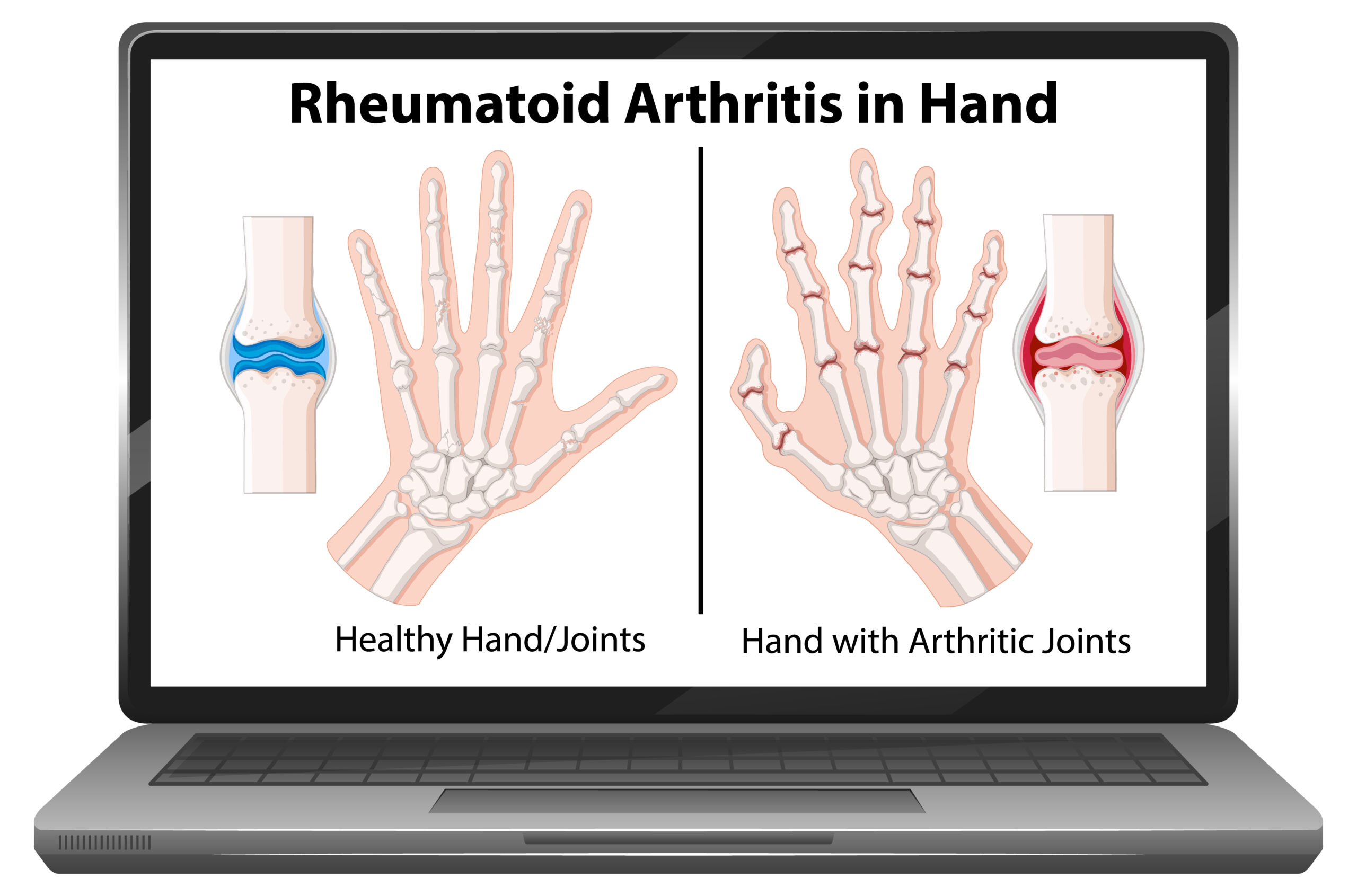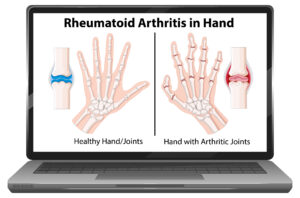Wrist pain, hand numbness, and tingling are complaints that send countless people to their doctors each year, often with a suspicion of carpal tunnel syndrome.
Carpal tunnel syndrome, a condition caused by compression of the median nerve in the wrist, is frequently diagnosed due to its prevalence, affecting about 3-6% of the general population, according to the American Academy of Orthopaedic Surgeons. However, not all wrist pain or hand numbness stems from this condition.
In fact, two conditions that are often misdiagnosed as carpal tunnel syndrome are:
- Thoracic outlet syndrome
- Cervical radiculopathy
Misdiagnosis can lead to delayed treatment, prolonged discomfort, and even worsening symptoms, making it critical to understand these conditions and their differences.
As someone who has dealt with wrist pain myself, I know how frustrating it can be to deal with the symptoms that seem to point to one thing but might be something else entirely.
A friend of mine spent months icing her wrist and wearing a brace, convinced she had carpal tunnel syndrome, only to learn later it was a neck issue causing her symptoms.
Stories like hers are common, and they highlight the importance of accurate diagnosis. Let’s dive into the details of these conditions, why they’re mistaken for carpal tunnel syndrome, and how to differentiate them.
Table of Contents
ToggleWhat Is Carpal Tunnel Syndrome?
Before exploring the conditions mistaken for carpal tunnel syndrome, it’s helpful to understand what carpal tunnel syndrome actually is.
The carpal tunnel is a narrow passageway in the wrist made up of bones and ligaments. The median nerve, which controls sensation and movement in the thumb and the first three fingers, runs through this tunnel. When the tunnel narrows or tissues swell, often due to repetitive strain injury, arthritis, or pregnancy, the median nerve gets compressed, leading to symptoms like:
- Hand numbness or tingling, especially in the thumb, index, and middle fingers
- Wrist pain that may radiate up the arm
- Weakness or clumsiness in the hand
- Symptoms that worsen at night or with repetitive tasks
Two Conditions That Are Often Misdiagnosed as Carpal Tunnel Syndrome
1: Thoracic Outlet Syndrome: A Common Culprit
Thoracic outlet syndrome occurs when nerves or blood vessels are compressed in the thoracic outlet, the space between your collarbone and first rib. This compression often affects the brachial plexus, a network of nerves controlling the arm, shoulder, and hand.
Symptoms of thoracic outlet syndrome include:
- Numbness or tingling in the arm, hand, or fingers (often affecting all fingers, unlike carpal tunnel’s focus on the thumb and first two fingers)
- Pain in the neck, shoulder, or arm
- Weakness in the hand or arm
- Symptoms that worsen with overhead activities or prolonged arm elevation
Unlike carpal tunnel syndrome, which is localized to the wrist, thoracic outlet syndrome often involves upper extremity pain that feels more diffuse. For instance, someone with thoracic outlet syndrome might notice symptoms after carrying a heavy bag or working at a desk with poor posture.
Why the confusion? Both conditions cause hand numbness and nerve pain, and repetitive tasks can contribute to both. However, thoracic outlet syndrome is less likely to cause nighttime symptoms. A neurologist or hand surgeon might use specific tests, like the Adson’s maneuver (checking for pulse changes when raising the arm), to identify thoracic outlet syndrome.
2: Cervical Radiculopathy: The Neck Connection
The second of the two conditions that are often misdiagnosed as carpal tunnel syndrome is cervical radiculopathy, a condition caused by compression of spinal nerve roots in the neck. This often results from a herniated disc, arthritis, or bone spurs in the cervical spine.
Symptoms of cervical radiculopathy include:
- Pain, numbness, or tingling radiating from the neck into the arm, forearm, or hand
- Weakness in the arm or hand
- Symptoms that may affect specific fingers, depending on which nerve root is compressed (e.g., C6 or C7 nerve roots)
- Pain that worsens with neck movements, like turning or tilting the head
Cervical radiculopathy can mimic carpal tunnel syndrome because both involve nerve compression and hand tingling. However, cervical radiculopathy symptoms often extend beyond the wrist, affecting the entire arm. For example, you might feel a burning sensation from your shoulder to your fingers, which is less common in carpal tunnel syndrome.
The overlap in symptoms, especially hand numbness and weakness, makes cervical radiculopathy symptoms versus carpal tunnel a diagnostic challenge. My friend’s story comes to mind here; her wrist pain was initially treated with a brace, but it was neck stretches and physical therapy that finally relieved her symptoms, pointing to cervical radiculopathy.
Why Is Carpal Tunnel Syndrome Misdiagnosed?
The prevalence of carpal tunnel syndrome makes it a go-to diagnosis for wrist pain conditions, but this can lead to oversights. There are several factors:
- Symptom Overlap: Hand numbness, tingling, and wrist pain are common across nerve entrapment syndromes like thoracic outlet syndrome, cervical radiculopathy, and even peripheral neuropathy.
- Limited Testing: Some patients receive a carpal tunnel diagnosis based on symptoms alone, without confirmatory tests like electromyography (EMG) or nerve conduction studies. These tests to differentiate carpal tunnel from other conditions are critical, as they can pinpoint the exact location of nerve compression.
- Patient History: Repetitive tasks, like typing or assembly line work, are strongly associated, so doctors may assume it’s the cause without exploring common wrist pain conditions besides carpal tunnel.
- Referral Patterns: General practitioners may refer patients to an orthopedic surgeon for wrist pain, but conditions like cervical radiculopathy often require a neurologist’s expertise.
Misdiagnosis can delay proper treatment for wrist nerve conditions. For example, carpal tunnel release surgery won’t help if the issue is in your neck or shoulder, potentially leading to chronic wrist pain or worsening nerve damage.
How to Avoid Carpal Tunnel Misdiagnosis
Here are practical steps to ensure you get the right diagnosis:
- Describe Symptoms in Detail: Tell your doctor exactly where the pain starts, which fingers are affected, and what activities worsen it. For instance, symptoms of thoracic outlet syndrome vs. carpal tunnel often include arm fatigue with overhead tasks, while cervical radiculopathy might involve neck stiffness.
- Request Diagnostic Tests: Ask for an EMG or nerve conduction study to confirm nerve compression and its location. These tests can distinguish between median nerve issues (carpal tunnel) and ulnar nerve or spinal nerve root problems.
- See a Specialist: A hand surgeon or neurologist can offer a more precise orthopedic diagnosis. They may perform physical exams, like Spurling’s test for cervical radiculopathy or Tinel’s sign.
- Consider Physical Therapy: A physical therapist can assess your posture and movement patterns, which may reveal clues about thoracic outlet syndrome or cervical issues.
Treatment and Next Steps
Once correctly diagnosed, treatment varies. Carpal tunnel syndrome might respond to wrist splints, corticosteroid injections, or surgery in severe cases.
Thoracic outlet syndrome often improves with physical therapy to strengthen shoulder muscles and improve posture, though surgery is sometimes needed.
Cervical radiculopathy may require neck exercises, anti-inflammatory medications, or, in rare cases, spinal surgery.
The key is persistence. If your symptoms don’t improve with treatment, revisit your diagnosis. What conditions are mistaken for carpal tunnel syndrome is a question worth asking if you’re not getting relief. Misdiagnosed wrist conditions can linger, but with the right approach, you can find answers.
Conclusion
Wrist pain and hand numbness are complex, and assuming carpal tunnel syndrome is the cause can lead to missteps. The two conditions that are often misdiagnosed as carpal tunnel syndrome (thoracic outlet syndrome and cervical radiculopathy) share symptoms but require different treatments.
If you’re dealing with chronic wrist pain, don’t settle for a quick label. Dig deeper to find the true cause and get back to feeling your best.














